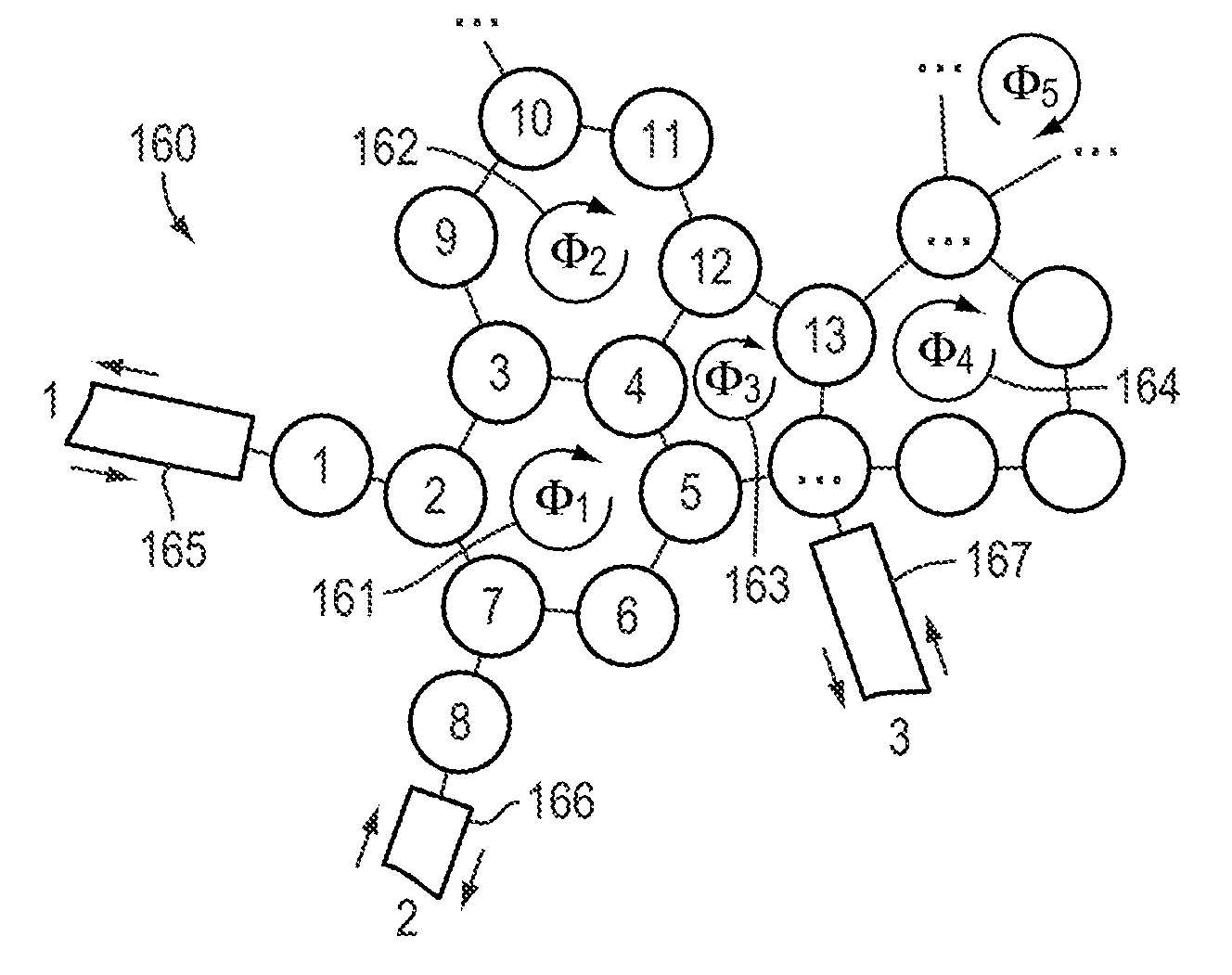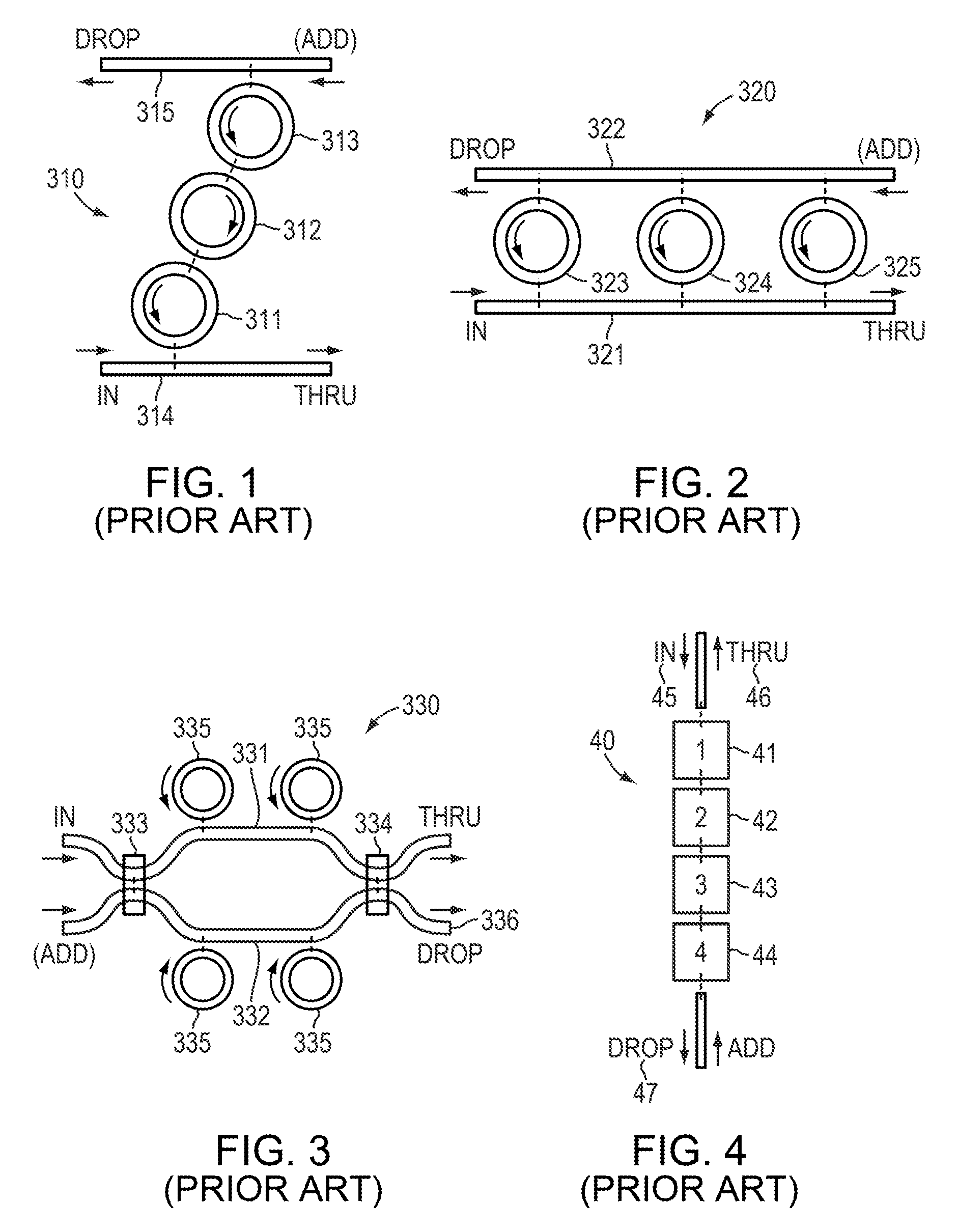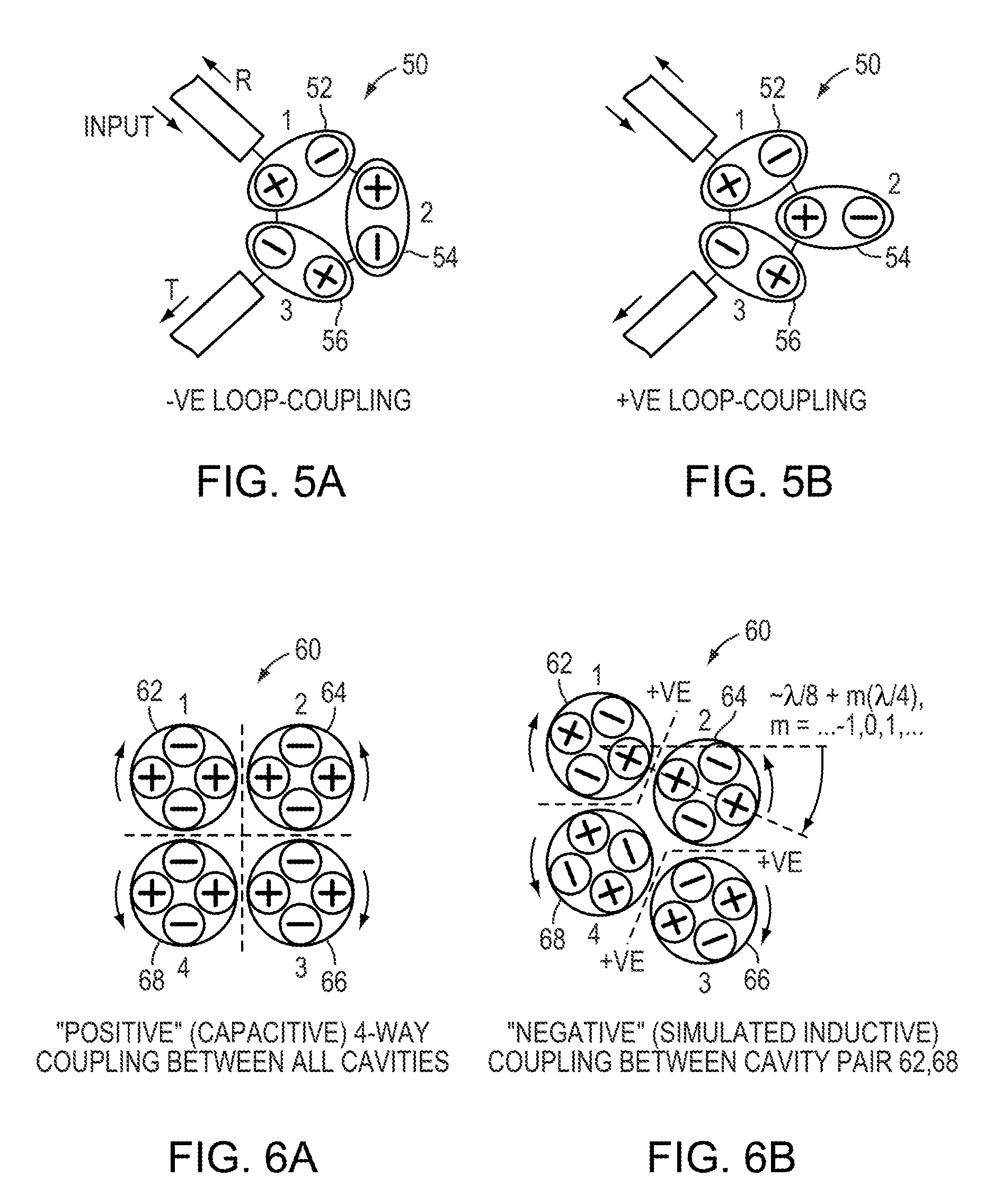Optical coupled resonator structures based on loop-coupled cavities and loop coupling phase
a resonator and cavity technology, applied in the field of optical resonator structures, can solve the problems of direct coupling between the first and second waveguides, which may or may not be substantially negligible, and achieve the effect of reducing the size and weight of the payload and high spectral efficiency
- Summary
- Abstract
- Description
- Claims
- Application Information
AI Technical Summary
Benefits of technology
Problems solved by technology
Method used
Image
Examples
Embodiment Construction
[0066]In general, the present invention pertains to optical-coupled resonator structures that are based on loop-coupled cavities and loop coupling phase.
[0067]Loop coupling of cavities may be understood as follows. FIGS. 5a-b each show one embodiment of a third-order loop-coupled resonant structure 50 (i.e., a resonant structure having three cavities or, more rigorously, three resonant modes in use near the wavelength of interest, which may or may not be substantially located in separate cavities), based on standing wave cavities. The structure 50 includes a single coupling loop. A (non-trivial) coupling loop is defined as a path through a sequence of mutually coupled cavities that begins with an arbitrary cavity and that ends at that same arbitrary cavity after traversing at least two other cavities, but without the path being retraced. For example, the coupling loop of FIGS. 5a and 5b can be written as the sequence 52-54-56-52, with numbers referring to the cavities. Sequences rep...
PUM
 Login to View More
Login to View More Abstract
Description
Claims
Application Information
 Login to View More
Login to View More - R&D
- Intellectual Property
- Life Sciences
- Materials
- Tech Scout
- Unparalleled Data Quality
- Higher Quality Content
- 60% Fewer Hallucinations
Browse by: Latest US Patents, China's latest patents, Technical Efficacy Thesaurus, Application Domain, Technology Topic, Popular Technical Reports.
© 2025 PatSnap. All rights reserved.Legal|Privacy policy|Modern Slavery Act Transparency Statement|Sitemap|About US| Contact US: help@patsnap.com



